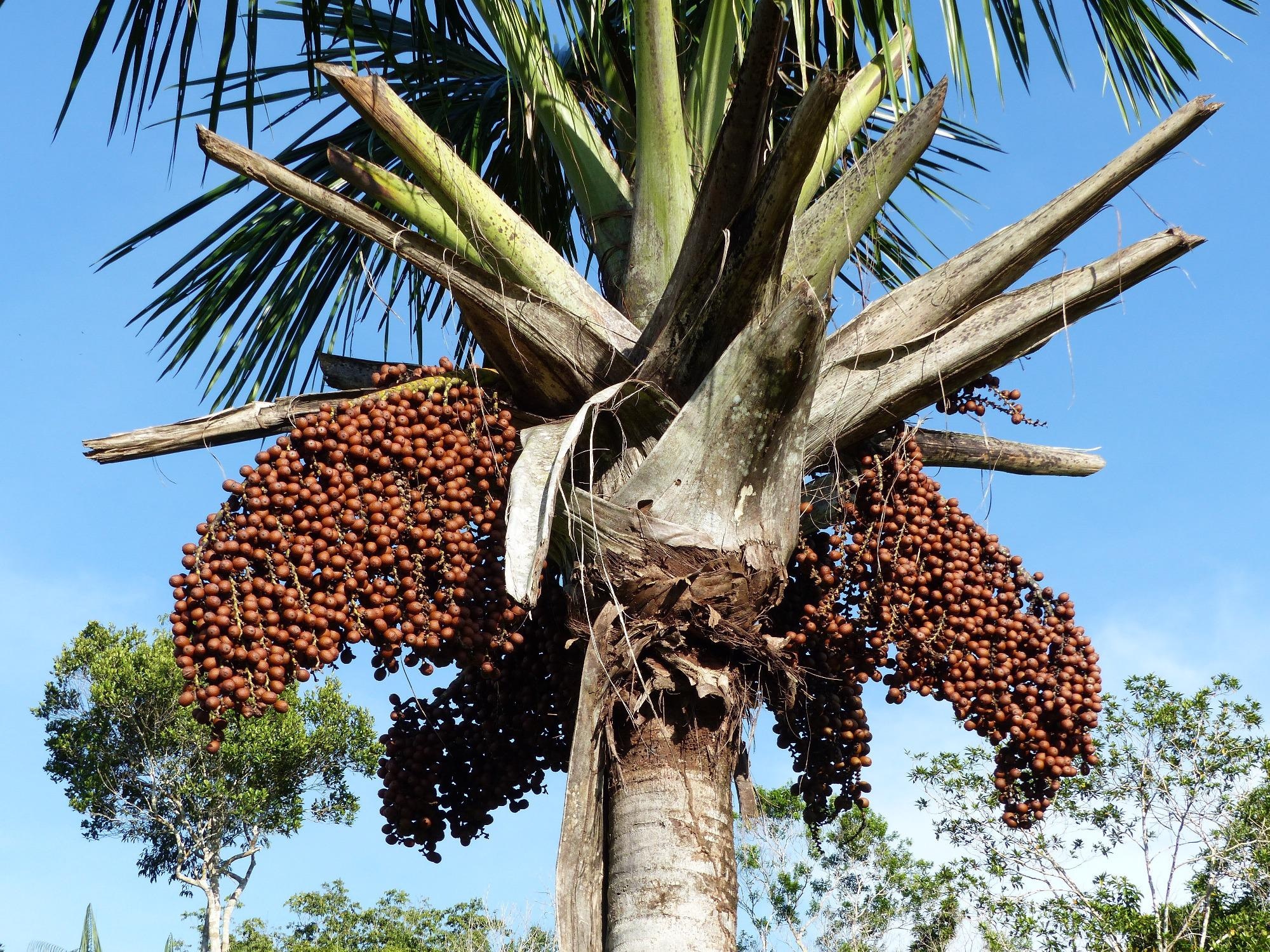A team of ecologists led by the University of Leeds and the Amazonian Research Institute of Peru - IIAP - has shown that harvesting the fruit of Mauritia flexuosa by climbing the palm tree - instead of cutting it - could lead to a dramatic improvement in the ecology of the Amazonian rainforest as well as the livelihood of indigenous communities.
 image Credit: Shutterstock.com/guentermanaus
image Credit: Shutterstock.com/guentermanaus
The low peatlands of northeastern Peru, covering 2.8 million hectares, are one of the most carbon-dense ecosystems in Amazonia. Sustainable harvesting of tropical peatlands is crucial for mitigating climate change, maintaining biodiversity and supporting the local economy.
Changing the way the fruit is harvested can increase both the number of fruit-bearing palms trees, and the value of these Amazonian peatland ecosystems to people.
Gabriel Hidango, School of Geography, University of Leeds
Mauritia Flexuosa Palm Trees
Mauritia flexuosa is a palm tree native to tropical South America. It grows up to 40 meters in height, taking ten years to reach maturity. Dubbed “the tree of life” by German explorer Alexander von Humboldt, it is a keystone species exerting a large influence on the Amazonian ecology.
The Mauritia flexuosa tree also has significant cultural and economic significance. Growing between December and June, its fruit has a chestnut color and scaly appearance, bearing up to 800 fruits per stalk.
Since the fruit is borne by the female of the species, the abundance of female palms is a good indicator of the levels of resource extraction in palm swamp ecosystems. An undisturbed ecosystem displays a 50:50 ratio of male to female palm trees, as reported in the Colombian and Peruvian Amazon.
Modeling Sustainable Palm Fruit Harvesting
Tropical peatlands harbor unique ecosystems of fauna and flora, storing approximately 104 billion tons of carbon. They also provide a wide range of resources to indigenous communities. Peatland ecosystems are critical in tackling climate change, conserving biodiversity and supporting local communities.
Therefore, it is crucial to quantify the services provided by these ecosystems. In particular, it is important to understand how the abundance of economically important species has been affected by historical harvesting practices.
The team comprised ecologists from Peru (Instituto de Investigaciones de la Amazonía Peruana, Universidad Nacional de la Amazonía Peruana, and Equipo Primatológico del Perú), the United Kingdom (Universities of Leeds, St Andrews, and Liverpool), the United States and the Netherlands.
They focused their study on the fruit of the Mauritia flexuosa palm tree, an economically important resource in the tropical peatlands of northeastern Peru. The economic and ecological impacts of the extensive felling of female trees have not been studied until now.
Furthermore, since tree climbing has been introduced as an alternative to felling, there is no experimental evidence of its effect on the same.
Dr. Eurídice Honorio Coronado is a researcher in the School of Geography & Sustainable Development at the University of St Andrews. She started cataloging the proportion of female trees as a measure of the impact of resource extraction on peat ecosystems while working at IIAP.
This is the first estimate of the total value of this resource to communities in this region and will help to promote sustainable fruit harvesting by communities.
Dr. Eurídice Honorio, School of Geography & Sustainable Development, University of St Andrews
The team collected extensive data across 93 sites of tropical Peatland in northern Peru. By comparing their data with a baseline population of 50:50 male to female trees, they could quantify the levels of resource extraction.
They found there was a wide range of variations across the sites — In 3 sites, only 4% of trees were female, while in 24 sites, this proportion exceeded 40%. They also found that travel time to the main urban center of Iquitos was a contributing factor. Crucially, where palms trees are climbed, there are 26% to 36% more female trees compared to sites where trees are felled.
In fact, the team estimates that the historical harvesting of palm tree fruit has led to a 55% reduction in resource capacity. Conversely, they estimate that if tree climbing was adopted universally, fruit production would increase by 51% totaling $62 million in economic value.
This study not only demonstrates the high ecological cost of historical fruit harvesting but also provides a sustainable alternative to economic growth.
Reducing deforestation of tropical forests is a global priority to mitigate climate change. Achieving success depends on increasing the value of standing forest to people who live in these landscapes. This study demonstrates a pathway to do this in one of the most carbon-rich landscapes on the planet.
Prof. Tim Baker, School of Geography, University of Leeds
References and Further Reading
Hidalgo, P., et. al., (2022) Sustainable palm fruit harvesting as a pathway to conserve Amazon peatland forests. Nature Sustainability [online] Available at: https://www.nature.com/articles/s41893-022-00858-z
University of Leeds (2022) “Tree of life” could help slow climate change. [online] Available at: https://www.leeds.ac.uk/news-environment/news/article/5061/tree-of-life-could-help-slow-climate-change
Disclaimer: The views expressed here are those of the author expressed in their private capacity and do not necessarily represent the views of AZoM.com Limited T/A AZoNetwork the owner and operator of this website. This disclaimer forms part of the Terms and conditions of use of this website.